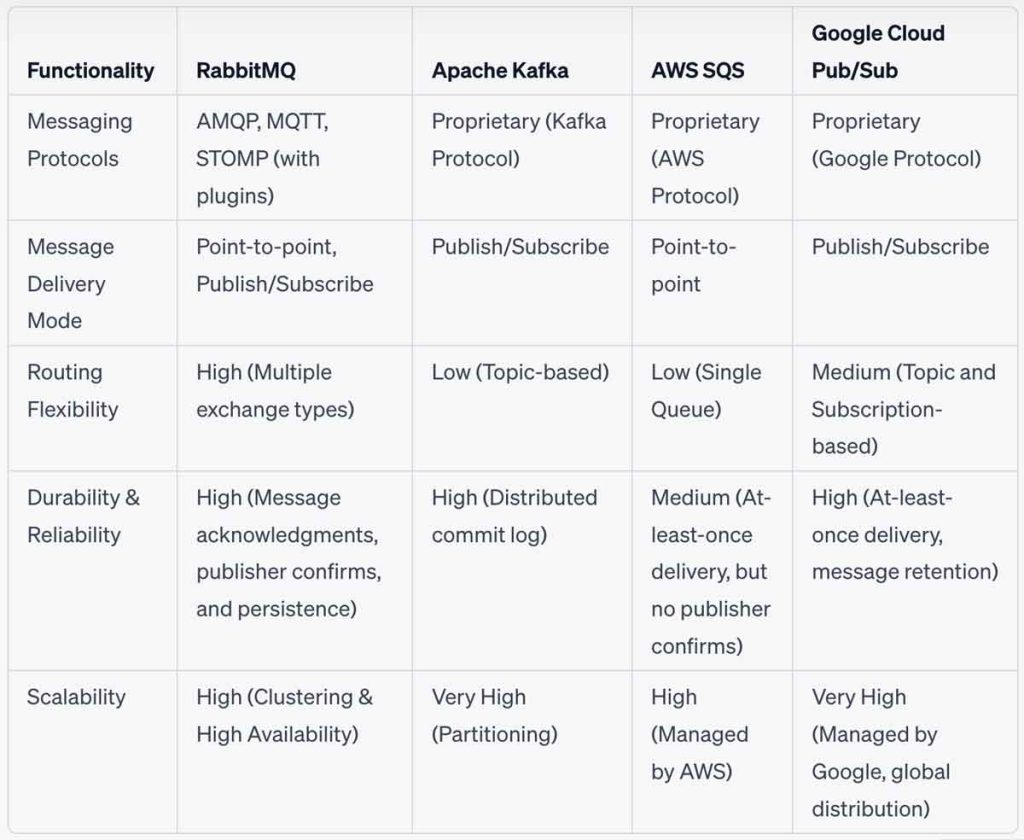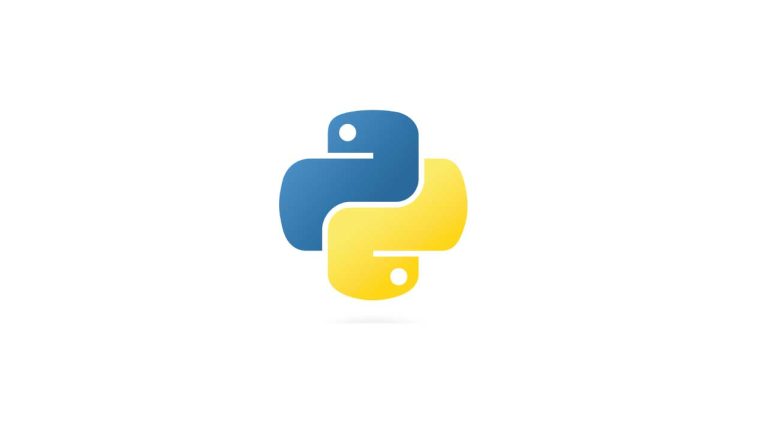RabbitMQ Message Broker
As applications have become more complex and distributed in the modern technical landscape, efficient communication between different parts and components has become more critical. Message queue/broker software has been developed to handle this need for communication between various aspects of software applications. RabbitMQ is one of the most popular open-source message brokers.
Let’s take a look at RabbitMQ, including what it is and how it works. We can also understand RabbitMQ by comparing it with other similar technologies.
What is a Message Queue/Broker?
In a nutshell, a message queue/broker acts as a middleman for different components of a software system to communicate efficiently. It manages the queues of ‘messages’—units of data sent from one part of the system to another.
Message queueing is based on the architectural design pattern known as message-oriented middleware (MOM). The key roles of message queue/brokers include decoupling, ensuring asynchronicity, reliability, load balancing, scalability, and facilitating interoperability among diverse parts of an application. The message broker model supports point-to-point, request/reply, and publish/subscribe messaging paradigms, making it a versatile solution for many different types of applications.
Introducing RabbitMQ
RabbitMQ, built in 2007, is an open-source message broker that offers robust messaging for applications. Its core is written in Erlang, a language designed for robustness and concurrency, while the ‘rabbit’ in RabbitMQ is a nod to the ‘quick’ and ‘agile’ nature of message passing.
RabbitMQ supports multiple messaging protocols, most notably Advanced Message Queuing Protocol (AMQP), but also MQTT, STOMP, and others through plugins. These protocols allow for language-agnostic communication and enable RabbitMQ’s widespread adoption in many diverse systems.
RabbitMQ’s architecture consists of producers, exchanges, queues, and consumers. Producers send messages to exchanges, which are effectively message routers. Depending on the type of exchange and rules defined (bindings), messages are then routed to one or more queues. Consumers, in turn, subscribe to queues to process messages.
RabbitMQ Quick Facts
- Multilingual Support: RabbitMQ is an open-source message broker that supports multiple messaging protocols, including AMQP, MQTT, and STOMP. This makes it possible for different parts of an application written in different programming languages to communicate with each other effectively.
- Flexible Routing: RabbitMQ uses “exchanges” to route messages. The type of exchange used (direct, topic, fanout, headers) and the rules defined (bindings) allow for a high degree of flexibility in message routing, making RabbitMQ suitable for a wide range of applications.
- Durability and Reliability: To ensure that no messages are lost, RabbitMQ provides features such as message acknowledgments, publisher confirms, and message persistence. Additionally, queues and exchanges can be marked as “durable” to survive broker restarts.
- Scalability and Distribution: RabbitMQ supports clustering and high-availability configurations, allowing it to scale horizontally to accommodate larger loads. This makes RabbitMQ a good fit for distributed systems where work needs to be shared between multiple nodes.
- Use in High-Profile Companies: RabbitMQ is used in production by several high-profile technology companies, including Instagram, Indeed, and VMware, which speaks to its robustness and capability to handle high-load, critical applications.
To ensure reliability, RabbitMQ provides features such as message acknowledgments, publisher confirms, and message persistence. RabbitMQ can also be clustered and made highly available, improving its robustness and scalability.
How RabbitMQ is Used In Popular Apps
To understand RabbitMQ and what it can do, it’s useful to take a look at some of the popular apps that use RabbitMQ as a message queue/broker.
- Instagram: Instagram uses RabbitMQ as a part of its feed delivery system. The system needs to deliver updates like new posts, likes, comments, and follows to user activity feeds in real time. RabbitMQ’s robustness, reliability, and ability to scale make it an excellent choice for this critical part of Instagram’s infrastructure.
- Indeed.com: Indeed, the world’s largest job site, uses RabbitMQ for offline processing and data synchronization between different parts of their system. Whenever a user performs an action on the website like uploading a resume or clicking on a job listing, this information is sent as a message to RabbitMQ, which routes it to the appropriate part of the system for processing. This helps keep the website responsive for users while still allowing the site to process large amounts of data.
- VMware: VMware uses RabbitMQ in its vCloud Director product, which is a cloud service-delivery platform. vCloud Director needs to process tasks like creating, updating, and deleting virtual machines, networks, and storage. RabbitMQ is used to queue these tasks and allow them to be processed asynchronously, ensuring that the system remains responsive even under heavy load.
In each of these cases, RabbitMQ is chosen because of its ability to reliably and efficiently route messages in a distributed system, allowing these large-scale applications to process data effectively and stay responsive to user actions.
RabbitMQ Compared to Other Technologies
Let’s see how RabbitMQ stands up against similar technologies, like Apache Kafka, AWS SQS, and Google Cloud Pub/Sub.
- RabbitMQ vs Apache Kafka: Kafka is another popular open-source solution, designed for high-throughput, distributed systems, making it ideal for large-scale data streaming applications. Kafka operates as a distributed commit log, maintaining the order of messages and allowing replayability, which RabbitMQ does not inherently offer. However, RabbitMQ is easier to set up and manage than Kafka, and it offers more flexible routing options via multiple exchange types.
- RabbitMQ vs AWS SQS: Amazon Simple Queue Service (SQS) is a managed service, meaning Amazon takes care of the maintenance, but it also means less control and customization than RabbitMQ. SQS supports only point-to-point communication and lacks the routing flexibility of RabbitMQ. However, SQS integrates seamlessly with other AWS services, which can be a significant advantage in an AWS-centric environment.
- RabbitMQ vs Google Cloud Pub/Sub: Google Cloud Pub/Sub is a scalable messaging service that allows real-time analytics by providing durable, low-latency message delivery. Like SQS, it is a managed service, offering less customization but also less operational overhead than RabbitMQ. Pub/Sub only supports the publish/subscribe paradigm, whereas RabbitMQ supports multiple messaging paradigraphics.
RabbitMQ vs Apache Kafka, AWS SQS, and Google Pub/Sub
The table below is a comparison of RabbitMQ to some of its closest alternatives: Apache Kafka, AWS SQS, and Google Cloud Pub/Sub. This comparison should give you a good idea of where RabbitMQ fits and its usefulness in terms of supported messaging protocols, message delivery modes, routing flexibility and other important message queueing factors.

RabbitMQ is a flexible, robust, and widely adopted message broker that can cater to many different use cases thanks to its support for multiple protocols and message routing capabilities. Its comparison with other technologies indicates its strengths and potential use-cases, but the choice between these depends on the specific requirements of the project. Understanding the principles behind message queueing/brokering and the features of these technologies is vital for developing efficient, scalable, and robust software systems.








2 Comments
Comments are closed.